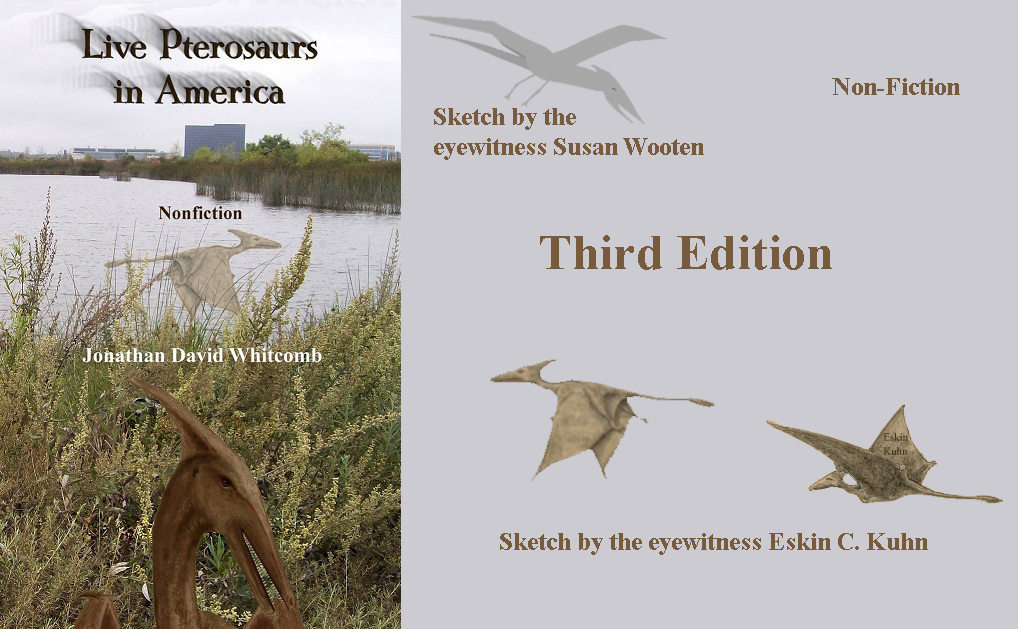Have you noticed your two blind spots while driving? Unless you ride a motorcycle or drive a car with no windshield or constantly rock your head forward and back, those blind spots (side-supports for the windshield) follow you everywhere. I’m usually careful pulling forward from a stop sign at a particular intersection near my house, for a car is almost always parked on my right. The other day, I pulled forward, fortunately with usual care, and noticed a car, slowly coming from my right, almost obscured by my right blind spot. The other driver acknowledged my second stop and passed safely in front of me. We were never close to having a collision, but it brought those blind spots into my view.
The point? Professors who teach the universal extinction of all species of pterosaurs—those professors never ride motorcycles . . . something like that. But everybody has blind spots, of course, not just paleontologists; the danger is in living as if we had none.
Over the past eight years, I have encountered critics who assume that my associates and I have a serious bias: a religious blind spot caused by our need to support our beliefs through the idea that pterosaurs are modern rather than extinct. Those critics fail to realize that Garth Guessman, David Woetzel, Paul Nation, and I have differences in religious beliefs: Aside from being Bible-believing Christians, we probably have at least somewhat different interpretations of some parts of Genesis.
But those critics are seriously mistaken about our need for living pterosaurs. We would have been quite happy in our faith in Jesus Christ even were all species of pterosaurs to be extinct. Humans are known to be the major cause of extinctions in recent centuries and humans were probably the cause for many extinctions in the more distant past. Turning over the coin, a serious bias is not restricted to those holding a less-popular opinion. What about those critics?
Over the past eight years, I have interviewed eyewitnesses from various countries, of various religious beliefs, with various educational backgrounds, under various cultural influences. As far as I know, I have communicated with more apparent-pterosaur eyewitnesses than any other cryptozoologist in the world. What do the eyewitnesses have in common? Each one has seen a winged creature whose description suggests a living pterosaur more than it suggests any bird or bat. Human experience deserves our attention, even if that common experience from around the world contradicts an assumption popular with one or more of the world’s cultures. Critics appear to have failed to read far enough to notice that critical detail.
Western culture has a blind spot (at least one) that blocks communication with eyewitnesses of pterosaurs. We need to listen to eyewitnesses, and we need to move our head forward a few inches to see past the blind spot . . . something like that.
In the introduction to the third edition of my book Live Pterosaurs in America, I wrote:
. . . please consider the feelings of those who have revealed to us their encounters with what seem to be live pterosaurs, for some of them have suffered more than discomfort. I intend to comfort those innocent victims who have been ridiculed or ostracized because of a cultural weakness, for each has seen something unaccepted by their society.
On page 95 I wrote:
Now compare those reactions to those of natives in Papua New Guinea. My experience interviewing natives and reviewing interviews done by other explorers—that suggests it’s easier to catch a giant ropen in a fishing net than to find a native eyewitness who disbelieves personal experience because of what American professors assume. Eyewitnesses in a culture that dogmatically teaches pterosaur extinction—they sometimes have problems dealing with an experience that they feel should not have been experienced; native eyewitnesses in New Guinea have no problem.
On page 96 I wrote:
What has a beak and a long tail, and flies with no feathers? . . . Some would reply, “Living or extinct?” But why not just answer that question? Of course it is a Rhamphorhynchoid (long-tailed) pterosaur, called by many non-scientists “pterodactyl,” a layman’s term for any reptilian-like “prehistoric” featherless flying creature. The point? What’s wrong with simply accepting an eyewitness report of a long-tailed featherless flying creature? Why believe that all pterosaur species must be extinct? Without the idea of universal Rhamphorhynchoid extinction, we conclude that the eyewitness saw a pterosaur. Non-extinction, as an alternative, now appears.
I’m responding to a forum thread that attacks not any particular sighting report or analysis of any sighting: It attacks me. I will not attack the critics in retaliation but feel it better to answer a few of their comments.



